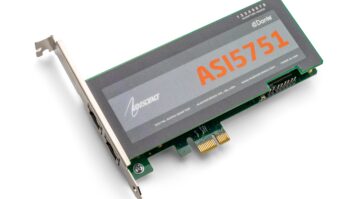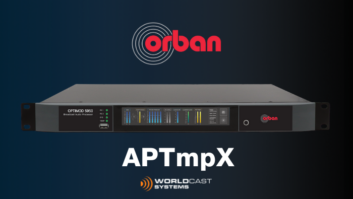This is one in a series of articles on the fundamentals of FM transmission systems.
In the case of FM antenna systems, there generally are two choices for transmission line types: rigid and semi-flexible.
Air-dielectric rigid line is, as its name implies, a fixed shape that is not intended to bend. It typically comes in 20-foot flanged or unflanged sections. Sections that are intended to go on the tower usually are equipped with factory-installed EIA flanges. Sections that are used for inside RF plumbing, such as between the transmitter, RF switch or patch panel, combiner and gas barrier often are supplied without flanges.
Field flanges are available and attached by silver-soldering or with hose clamps. A variety of adaptors, including reducers, elbows and 45-degree sections, allow routing of rigid transmission line to virtually any location within a transmitter building.
Semi-flexible line, aptly named because of its somewhat limited bending capability, comes in air- or foam-dielectric types. In the case of air-dielectric line, the inner conductor is held in place with a Teflon spiral. With foam-dielectric semi-flexible line, available in sizes up to and including 2-1/4 inches, a foam dielectric material fills the space between the inner and outer conductors, holding a more-or-less constant spacing between the two. Semi-flexible line comes on a spool in a continuous run and generally is ordered to length. An EIA flange gas-barrier or gas-pass connector is ordered for either end to complete the transmission line run.
Keep out the wet
Either type of air-dielectric line requires a supply of nitrogen or dehydrated air to keep the line pressurized to a few pounds per square inch above ambient. The purpose of the dry air is to keep out moisture. Pressurization of the line implies that the line must be airtight. EIA flange connectors come equipped with rubber O-rings to provide an airtight flange-to-flange seal. Connectors fitted to semi-flexible air-dielectric line are equipped with special rubber seals that provide an airtight fit between the brass connector and the copper line.
A method of getting the pressurizing air or nitrogen into the transmission line must be provided. This typically is in the form of a gas-barrier, which can be integral in a semi-flexible line connector or stand-alone with an EIA flange on either end. A fitting is provided for connecting the pressurization tubing.
Moisture be kept out of air-dielectric transmission line. It will cause oxidation in the copper, which increases attenuation at higher frequencies. Attenuation on the order of 4 dB per 100 feet has been measured in 3-inch and 3-1/8-inch semi-flexible and rigid air dielectric lines that have not been pressurized. This represents a tremendous power loss, which translates directly to signal loss.
Be aware of the advantages and disadvantages of each type of transmission line. Rigid line has the advantage of lower losses. This usually amounts to a few hundredths of a dB per 100 feet over a comparable semi-flexible line. This can add up to a significant amount of power in the case of a long transmission line run.
Another advantage of rigid line is that it is more repairable than semi-flexible. It can be removed from the tower in 20-foot sections, the inner conductor can be removed and both inner and outer can be cleaned. In the case of semi-flexible air-dielectric line, quite often a large section of the line must be removed and a replacement piece spliced in. The cutting process allows copper and Teflon shavings to fall into the line below the cut, and these shavings can accumulate in one location and produce an arc, causing further damage. Quite often, the only recourse in the case of a damaged semi-flexible line is to replace it in its entirety.
Semi-flexible line has the advantage of lower cost, sometimes as little as half that of a comparable rigid line. It also is installed in a continuous run, not joined with expansion connectors or “bullets” every 20 feet. Expansion, contraction and vibration of a rigid line cause chafing where the expansion connectors join the inner conductors; this can produce a less-than-optimal connection. The I²R loss at the connection causes heat, which further degrades the connection and eventually produces a burnout.
In the next installment of this series, we will discuss line sizes, power ratings, losses and the right transmission line for a particular installation.












